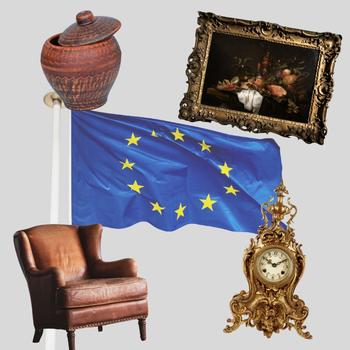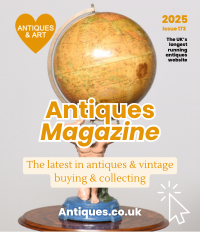featured item

quality pair of antique edwardian postal scales and weights Read more
Important update for sellers: taking art or cultural property in the EU
Posted by Chris on 08/07/2025

An important update for antiques dealers and sellers in the UK regarding taking art or cultural property into the EU after 28 June 2025. Here's what you need to know.
Article originally published by Fladgate LLP.
From 28 June 2025, any art/cultural property being imported into the EU which was originally created or discovered outside the EU will have to comply with EU Regulation 2019/880.
People relocating back to the EU as a result of the recent change to the foreign income and gains tax regime may find they now have to provide evidence to show that the cultural objects they wish to take with them were lawfully exported from their country of origin.
The aim of the regulation
The Regulation is intended to curb the trade in illicitly exported cultural goods, targeting goods that contribute to the financing of terrorist activities, organised crime and tax evasion, by imposing specific procedures on the import of cultural property into the EU.
Following Brexit, the Regulation will not apply to England, Wales and Scotland but importing cultural goods into the EU that were created or discovered in Great Britan will be subject to the new regulations.
Cultural goods broadly fall into two categories:
Category B “high risk goods” under Article 3(1) of the Regulation:
- Goods which are more than 250 years old (irrespective of value) including archaeological excavations, antiquities and prehistoric items.
- Article 3(1) acts as an absolute prohibition on bringing Category B goods into the EU customs territory if there is evidence that they were removed from the country where they were either created or discovered, in breach of the laws and regulations of the source country.
- Category B goods require an import licence before they will be admitted to an EU country.
- This affects objects being brought into the EU for any reason including the return of objects on loan, overseas purchases or relocation of a private collection.
Category C “lower risk” goods under Article 3(2) of the Regulation:
- Goods which are more than 200 years old and have a value of €18,000 or more. This could include British old masters, silver, coins and manuscripts.
- Article 3(2) allows the goods to be imported subject to the importer securing an “importer statement”, declaring that the goods are being legally exported from the source country. It is therefore less stringent than an import licence.
Exceptions
There are limited exceptions to Articles 3(1) and 3(2):
- if you cannot reliably determine where the item was created/discovered; or
- you can prove that the item was removed from the country in which it was created/discovered before 24 April 1972
then the importer will have to show that the object was lawfully exported from the country in which it has been located for the last five years.
The Regulations also do not apply to items brought into the EU for purposes of art affairs or museum exhibitions. So the purchase of an object at an art fair in the EU does not mean the object will avoid the Regulation. The buyer will still need to apply for either a licence (if Category B goods), or importer statement (if Category C goods) if they want to keep it in the EU.
Checks of both categories of goods will be made at the point of introduction into the EU, which means at border control.
Control at the borders
From 28 June 2025, a new EU digital system known as the Import of Cultural Goods System (ICG) comes into operation, which will be used by all the customs authorities in the EU states to share information amongst member states.
Challenges and benefits
The requirement to prove that the objects were created in or discovered and then lawfully removed from their source country in the past has the capacity to cause major issues.
Even if you can prove the country of origin or discovery, which in itself may be difficult after 200 years, some countries have not operated or regulated an export system and so evidence of legal export might not be available. Until now, there has been no imperative to keep an export licence once it has served its purpose and many will have been disposed of years ago. Even if they are retained, many export licences only refer to a number of undefined objects, such as ‘100 pictures’, so arguably are going to be of little value for this purpose.
In the absence of historic export licences, other evidence such as auction catalogues, affidavits from vendors and Customs declarations referring to a licence (now lost) can be deployed. However, it remains to be seen how effective these will be or how long it will take to process the application.
The requirement to declare art any cultural property to the EU customs officials for the purposes of paying import tax also remains unaffected by this Regulation. The current EU import tax is 5.5%. Prior to Brexit, the UK was the most attractive point of entry into the EU as UK import tax is only 5%. That advantage has now been lost, however - this new regulation may mean that the UK benefits as it is seen as a less onerous destination for dealers and collectors to import goods into this jurisdiction - only time will tell.
Collectors/owners of art who are considering relocating their collections to the EU should assess what documentation they have and will need. If necessary, they should take advice on the national export laws of the source countries so they have as much information as possible before applying under the Regulation for either an import licence or importer statement.



